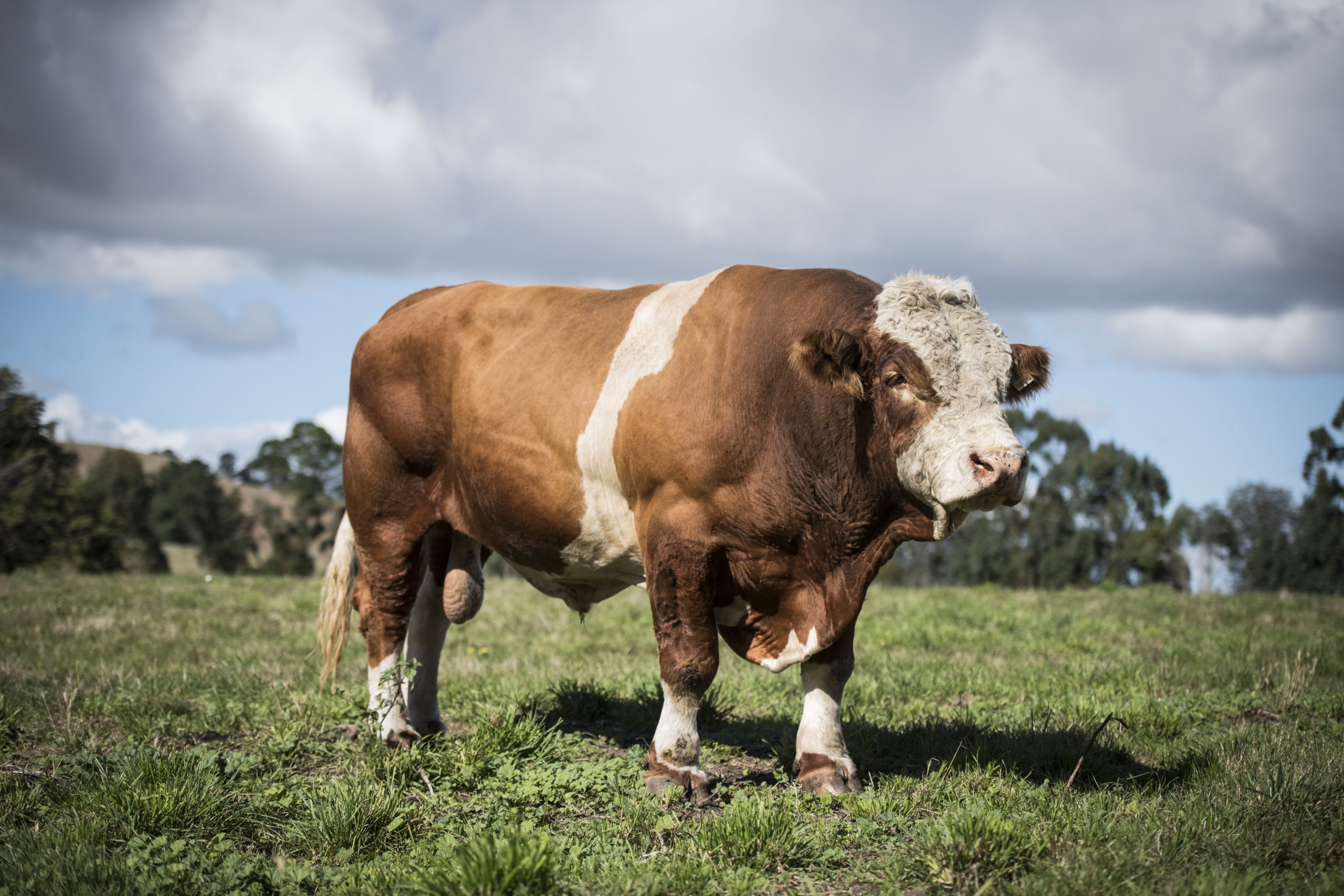Putting on the beef
A Simmental heifer gained massive media attention nearly 50 years ago when it was guided into the lift at a Christchurch hotel

A SIMMENTAL HEIFER GAINED massive media attention nearly 50 years ago when it was guided into the lift at a Christchurch hotel and transported to the top floor to be sold at a gala auction event.
The publicity stunt worked and the heifer was reputedly sold for $47,500 to an Australian buyer, keen to get a head start on building a purebred herd using embryo transfer.
They were heady days in the early 1970s when Simmental cattle first arrived in New Zealand in a wave of ‘exotic’ breed imports including Charolais and Limousin.
The original consignment of 20 purebred Simmental females from Germany was arranged by the Ministry of Agriculture & Fisheries and the fledgling NZ Simmental Association. These animals were offered to buyers through a ballot system. The lucky cattlemen made their selections while the cattle were completing their quarantine at Somes Island, in the middle of Wellington Harbour.
Further small consignments were imported from Europe and the United Kingdom in the following years. Not surprisingly, there was enormous demand for any purebred Simmental or Simmental-cross cattle in those early days, and prices around $50,000 were not uncommon.
Just over 50 years later, the Simmental breed is the third-ranked breed for registered stud females in the country. Simmentals have secured their place among beef bull buyers and the breed is now experiencing growing demand from dairy farmers looking for low birthweight beef bulls for their herds.
Breed society president Tracey Neal says the opportunity for cross breeding with the large British breed cow base in NZ was the major attraction farmers had for Simmentals in the early 70s.
“Heterosis was in play and it was a free lunch for many breeders who used Simmental bulls over their British breed cows. The progeny were exceptional and Simmental-sired weaners are often still among the top-priced pens of calves sold at weaner fairs right across the country,” she says.
Neal says the terminal sire bull market remains the primary outlet for Simmental bull breeders, but many are now targeting the dairy bull market and Simmentals are prominent in the rankings within Beef + Lamb NZ’s dairy bull progeny test.
It hasn’t all been plain-sailing for the breed in NZ. It took 15 years and heavy culling to overcome the stigma of Simmentals being renowned as a stroppy breed.
“As a breed society, we were the first to introduce an estimated breeding value (EBV) for docility and to measure docility in our heifers at both weaner and rising two-year-old stage, so we could cull poorly ranked cattle from our herds,” she says.
Today, the Simmental NZ breed society has 45 stud members across the country.
A recent herd tour of Northland snapped a two year gap in activities because of the travel restrictions imposed by Covid-19, also putting a hold on plans for a big celebration of the breed’s 50 years in NZ.
At an individual stud level, two Hawke’s Bay studs have reached the milestone of 50 years of breeding Simmental cattle.
The late John Absolom was a successful buyer from that first consignment of cattle. He preferred to build his Rissington stud through grading up using imported semen rather than paying excessive prices for the few purebred cattle available at the time.
Another Hawke’s Bay cattleman, Tony Thompson, marks 50 years of breeding Simmentals this year at his Glen Anthony stud near Waipukurau.
- Glen Anthony 50th year plans, see page 154.




